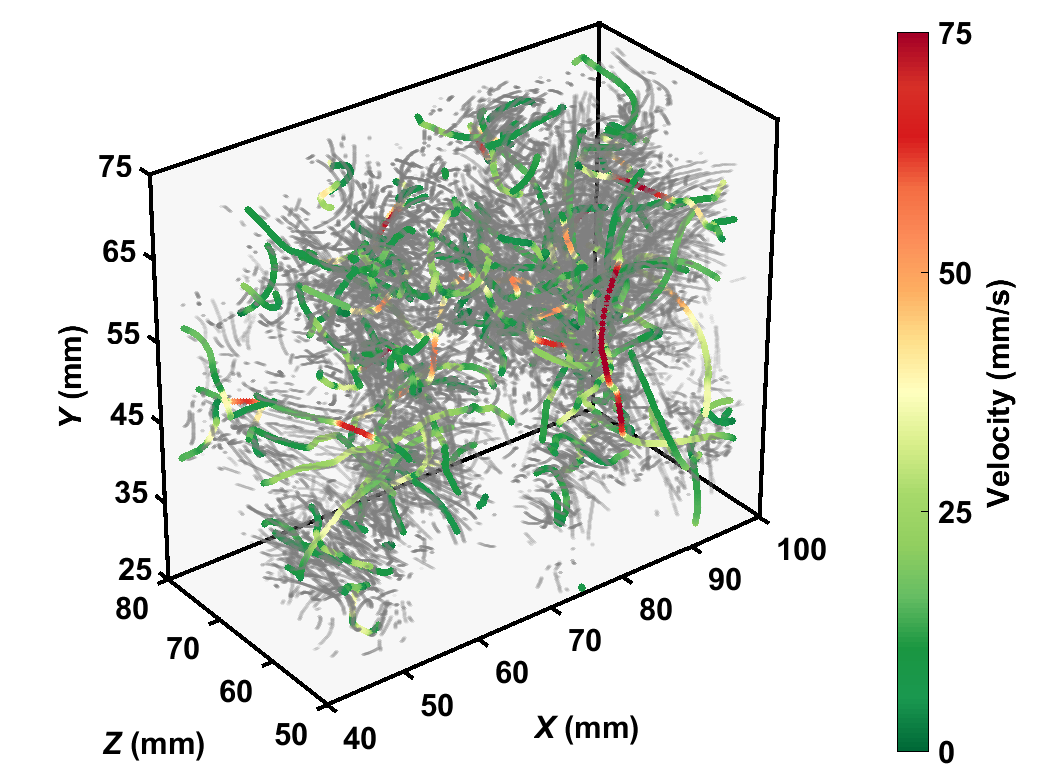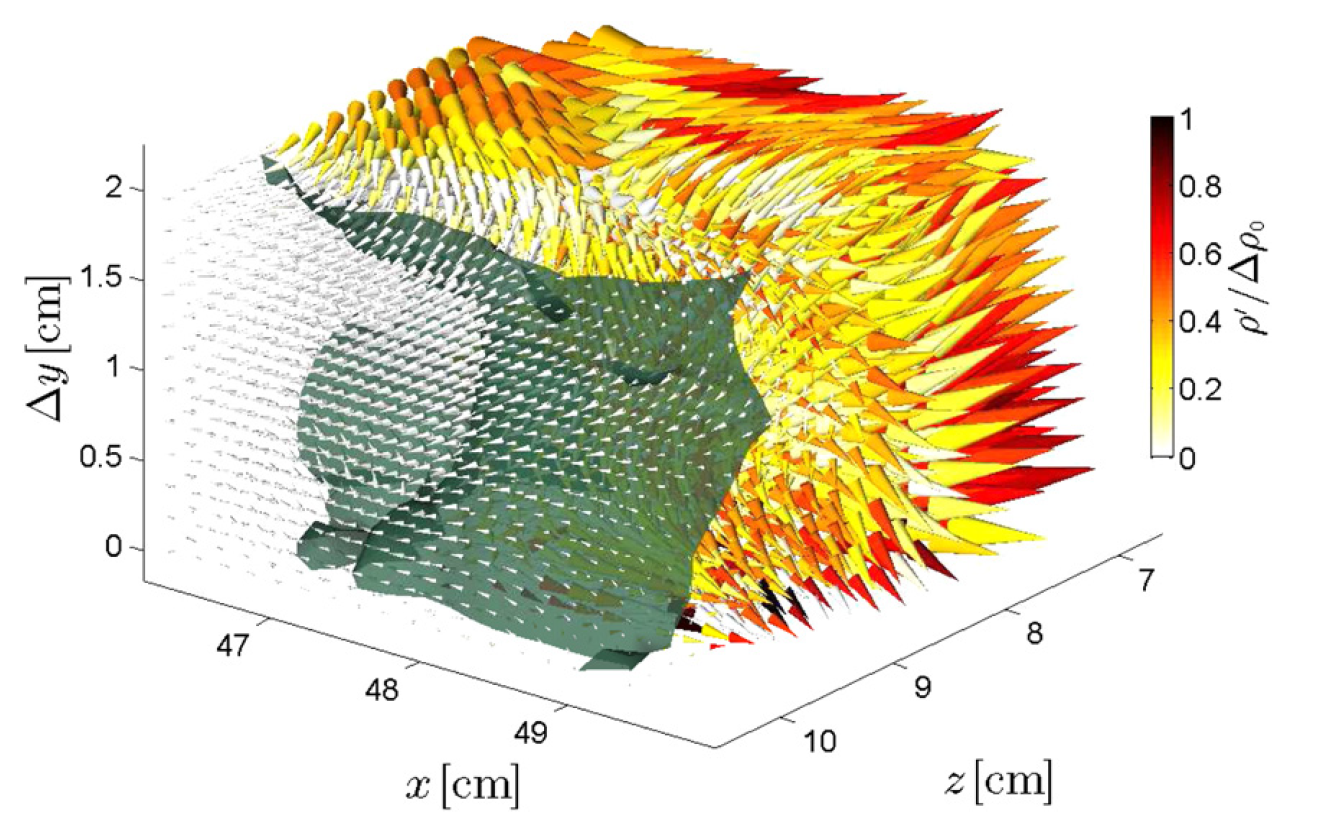Research
The aim of our research is to study feedback mechanisms between fluid flow and transported particles for the case where particles are active, i.e. they react back to the flow due to inertia or motility. Motile particles in turbulent flow are ubiquitously found in nature and technology, and they are at the interface between the disciplines of engineering, physics and environmental sciences. Depending on the nature of active behavior and interactions with the flow, motile particles display an extremely rich phenomenology and typically give rise to collective behavior affecting a large range of spatial scales, from the scale of the particle itself to scales that shape large bacterial colonies, fish schools in lakes, or plankton blooms in the ocean.
Up to now our understanding of such mechanisms is limited mainly because the interaction between fluid flow and active particles has received little attention, and also because appropriate measurements are challenging to obtain. Moreover, a novel perspective has now emerged due to significant recent progress in both theory and high-resolution experimental methods, indicating a paradigm change from mixing to clustering. Instead of homogenizing, turbulence and the motility of particles may lead to heterogeneous particle distributions at a range of spatial scales affecting a variety of environmental and ecological processes, for instance plankton dynamics in the ocean.
We combine theory, modelling, and experiments to resolve the physics of multiscale interactions of active particles in turbulence. The expectation is that a better understanding of such interactions will significantly advance our understanding of environmental flows and important ecological processes occurring in aquatic ecosystems.

